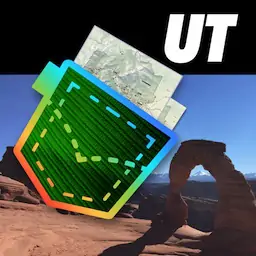"Hovenweep Castle" by U.S. National Park Service , public domain
WildlifeHovenweep |
Hovenweep
National Park Service
U.S. Department of the Interior
Hovenweep National Monument
Wildlife
The common raven thrives in a variety of environments: from treeless tundras to the
high desert around Hovenweep National Monumentt.
History
Hovenweep National Monument is located on
Cajon Mesa in the heart of the Great Sage Plain
which stretches from Cortez, CO to Blanding, UT.
Big game such as mammoths, mastodons, and
giant sloths may have originally brought humans
to this region as early as 15,000 B.C. However,
the first evidence of people on Cajon Mesa dates
from around 8,000 B.C. What ensued was a
gradual transition from hunting and gathering to
a more sedentary agricultural lifestyle. Clearing
woodlands for agriculture may have reduced elk
and turkey populations and hunting may have
impacted other large game animals such as the
bighorn sheep. Conversely, agricultural land may
have enhanced habitat for smaller animals such as
rabbits. By A.D. 600 the use of the bow and arrow
began, a technological advance that aided in the
hunting of smaller game.
Today there is abundant wildlife at Hovenweep
with more than 10 species of bats, 13 species
of rodents, 11 species of lizards, 10 species of
snakes, and 90 species of birds recorded within
the park’s 785 acres. Rodents and bats comprise
the majority of the mammals found here
because they are so well adapted to the harsh
desert climate. Many of the rodents are active
burrowers spending the hotter, drier hours of
the day underground. Bats utilize canyon walls,
cracks, and overhangs as daytime roosts. The heat
radiated at night by these same walls provides an
ideal temperature for the bats to fly and forage
in. Cold blooded reptiles like snakes and lizards
also thrive here, letting the abundant sunlight
keep their bodies warm. Birds flourish by taking
advantage of wetter microhabitats such as stream
beds and springs.
Wildlife
Coyote
Though you may have difficulty spotting one,
listen for the howls, barks, whines, and yips of
the coyote. While their calls may send a shiver up
your spine, these creatures are not to be feared
and are likely more afraid of you! Their soulpiercing howls communicate location within a
group or family. Other vocalizations may defend
territory, call for pups, and protect dens. Coyotes
are some of the most adaptable creatures in the
world. While they were originally found in the
northwest U.S., coyotes now occur everywhere in
the continental U.S., successfully taking over the
former range of their cousin and major predator,
the gray wolf (Canis lupus).
Desert Cottontail
Watch for cottontails hiding in the brushy desert
scrub. Cottontails are named for the white patch
of fur on their tail that resembles a cotton ball.
They raise this white tail when danger is near,
serving as an alarm signal to other cottontails.
These rabbits can run up to 20 mph in a zig-zag
pattern to escape predators! Cottontails belong to
the order of mammals called rodents - a group of
animals whose teeth never stop growing! Rabbits
use their sharp ever-growing teeth to nibble twigs
and grasses- their favorite foods. These furry
critters keep themselves cool in the hot desert sun
by radiating body heat through their large ears.
Coyote (Canis latrans).
Tarantula Hawk
This large wasp with a metallic blue-black body
and orange wings can grow up to 3 inches
long. Tarantula hawks (Pepsis sp.) are so named
because, other than humans, they are the
tarantula’s main predator. When a female is ready
to lay her eggs she finds a tarantula, attacks, stings,
and paralyzes it so that she can drag it back to
its burrow. There she lays a single egg on the
tarantula’s abdomen, exits the burrow, and seals
the chamber. When the egg hatches the tiny grub
feeds on the tarantula until fully grown by which
time the spider is dead. Watch out for these
powerful insects! They are much more venomous
than the tarantula they hunt and have one of the
most painful stings of any insect around.
Raven
The largest bird of the crow (Corvid) family,
ravens stand up to a foot tall! Ravens are
considered among the most intelligent of all birds.
They can learn to imitate a variety of sounds
including the human voice and their curious,
Protect the past
for the future
Your help is needed to preserve Hovenweep
National Monument. There are several things you
can do to preserve and protect Hovenweep for
future generations:
• Stay on designated trails and away from fallen
walls and mounds of stone. Walking on or near
walls and structures weakens them, accelerating
their deterioration.
• Areas behind chain barriers are closed to
protect fragile sites. Do not cross these
barriers.
observant nature will be apparent to anyone who
takes the time to notice. Ravens have a diverse
appetite which can include carrion, mice, lizards,
small birds, snakes, insects, and berries. Perhaps
it is their broad diet that allows them to thrive in a
number of different habitats ranging from treeless
tundras to mountain forests to the desert canyons
here at Hovenweep.
Whiptail lizard
Look for these lizards darting and dashing
around in search of food during summer days.
Unlike most lizards which employ the “sitand-wait” hunting method, whiptails are active
foragers. These lizards are easy to identify as
their tail is up to 2.5 times as long as their body!
Whiptails flick their forked tongues out into
the air an average of 460 times an hour. The
Jacobson’s organ, a chemosensory organ found
in many types of animals, sends vital information
about food, courtship, and communication
directly from the tongue to the brain.
• Take photographs; do not take artifacts. Any
person who excavates, removes, damages, alters,
or defaces any archeological resource on federal
lands is subject to arrest and felony prosecution
as dictated by the Archeological Resources
Protection Act of 1979.
• Eat at picnic tables only. Do not eat or leave
trash at archaeological sites. Food attracts
rodents that will burrow and build nests in
fragile structures.
• Pets are allowed on trails but must be on a leash
at all times.
• Look but do not touch. The oils from your
hands permanently stain rock surfaces.
Protect Yourself
• Bring enough water for yourself and your pets.
• Wear sunscreen and hat; rest often.
• Respect the wildlife. Venomous insects and
snakes live in the Southwest.
EXPERIENCE YOUR AMERICA
• Do not eat plants. Some may be poisonous.




